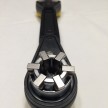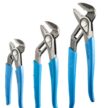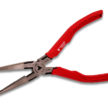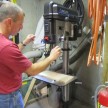Lenox Pliers Wrench
Lenox Pliers Wrench
The Lenox Pliers Wrench – two, two tools in one
The Lenox Pliers Wrench is a pair of pliers! The Lenox Pliers Wrench is a wrench! Stop! You’re both right. The Lenox Pliers Wrench is two, two tools in one.
If you don’t remember the classic Certs breath mints ad from 1960 that I’m aping above, go check it out. It was as campy then as it is now. And like the unseen narrator of that ad, let me explain what the Lenox Pliers Wrench is…I hope without his mansplaining inflection.

The Pliers Wrench Roots in the Neolithic
Pliers have been around, we believe, for around 5000 years. I don’t know what Gen 1 pliers looked like, but I imagine the hard part wasn’t figuring out the two levers – it was developing the pivot pin. We sometimes forget that early humans had fully developed brains…and lots of time on their hands.
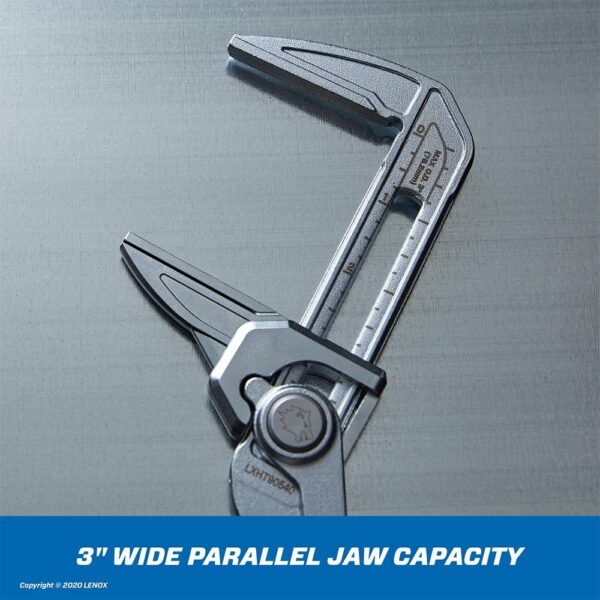
Pliers today come in an almost infinite variety of shapes, sizes, and configurations, almost certainly including some you’ve never seen because they’re specific to a particular industry. And depending on how you define a wrench, they’ve been around for a couple years now, too.
The pliers wrench, which combines the easy adjustability of tongue-and-groove offset pliers with the one-lever action of a wrench (see what I mean below), are a later invention – dating from only a couple of decades ago. Many commentators believe they have made adjustable-opening wrenches obsolete, but I wouldn’t go there – I see a place for both. What I can say is that an awful lot of trades practitioners have fallen in love with them.
Lenox Pliers Wrench – Exemplar of the Type
A pliers wrench looks like a funny set of tongue-and-groove offset pliers; the jaws are elongated and usually straight, smooth, and always parallel. No matter where you set the jaw opening, the handles often remain parallel, too.
The Lenox Pliers Wrench has push-button quick-adjust offset jaws that are 2.25 inches long. Those jaws can be opened to 3 inches wide (which is yuge!). Because of these features, they resemble pliers.

The straight, smooth, parallel jaws are part of the reason that they resemble a wrench. Thus, they don’t so much grab onto or around a nut (or fitting) like most pliers do, but they surround part of it the way a wrench does. And, once snugged up to a nut, the Lenox Pliers Wrench can be turned with pressure on just the upper handle (the handle that operates the movable jaw). Pliers, by contrast, have to have both handles held together before torque can be applied to the workpiece – and sometimes the operator’s grip strength becomes the weak link.
The Lenox Pliers Wrench is billed as a 10-inch model, but I’m not sure what that measurement refers to – the OAL is closer to 11 inches when fully closed up.
“Self-Ratcheting” and Actual Ratcheting Features
The Lenox Pliers Wrench, like most pliers wrenches, is billed as “self-ratcheting”, although this term is a little misleading (or confusing). What “self-ratcheting” refers to is that once snugged up to a nut (or any workpiece), the lower jaw can be opened a little by moving the upper handle upwards without altering the groove that the jaw’s tongue sits in. This feature allows you to then rotate both jaws around your workpiece and then, by re-closing the handles together, instantly grab onto the workpiece again. The lower jaw opens 3/8-inch in this “self-ratcheting” mode so that extra opening has to be enough to let the jaws rotate around the nut you’re working on or else you have to re-position the jaws like you would with an open-end wrench.

“Self-ratcheting” mechanism closed

“Self-ratcheting” mechanism open
The Lenox Pliers Wrench does incorporate a true ratcheting feature, too. You don’t have to use the push-button to adjust the jaw opening – you can simply slide the lower jaw to a more closed position by pushing the upper handle towards the upper jaw. (But this ratcheting is not reversible – you can only close the jaws in this way, not open them.)
The Specs
- Push button open, quick-adjust ratchet
- 3″ Jaw Capacity
- 2.25” jaw length
- 3/8” “self ratcheting” feature
- Chrome finish
- Hardened steel construction
- Smooth jaws
- Approximately 11” OAL
- Model LXHT90540
Using the Tool
Well, this tool works pretty much as advertised and as you’d expect. No unpleasant surprises and its features work as advertised. The handles are quite comfortable — just the right size and just the right amount of cushioning to be comfortable without feeling mushy. They provide quite a bit of torque when turning a nut, and the “self-ratcheting” action works perfectly (so long as the 3/8-inch extra jaw opening is enough to move around the nut). The long jaw length lets you reach into some tight spots that a shorter set of jaws wouldn’t. The push-button jaw-opening mechanism is smooth and tight, and the actual jaw-closing ratcheting action is crisp. When a tool does everything it says it will do, and does so comfortably and without issue — that’s pure goodness.

Initial turn
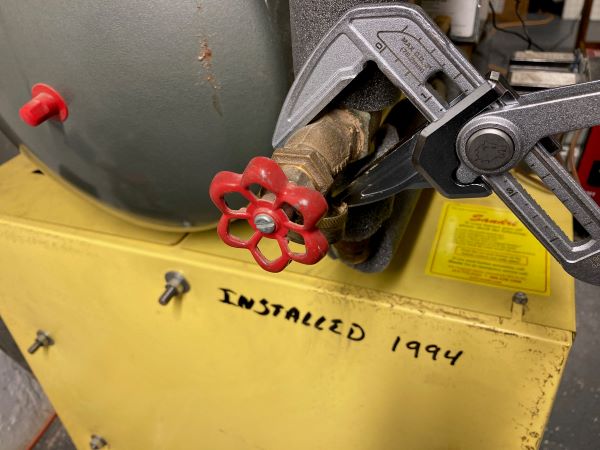
Open “self-ratcheting” action
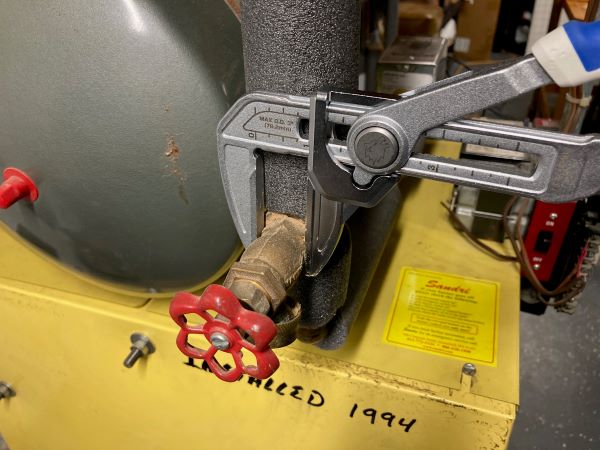
Close up and turn again
Honestly, the only thing I’d change is the color of the white handles! They are sure to get dirty and grimy in use. And if that’s the worst criticism of the Lenox Pliers Wrench I can make, well…
Where this tool shines, in my world, is in working nuts with finishes that you don’t want to mar, and working them more efficiently than you could with a wrench. Plumbing fixtures are a classic example here, and we all deal with them no matter what trade we’re nominally in. The limitation of this pliers wrench is its size. It’s not a big set of offset pliers, but it might not fit into some tight spaces where a small wrench might. To keep with the plumbing fixture theme, I’m thinking particularly of under-sink plumbing, which is often a pretty crowded neighborhood.

Bottom Line
The Lenox Pliers Wrench is approximately $43 on Amazon. That’s small change for a tool that might be just the ticket for an occasional job, so give them a try. Of course, if you’re in the plumbing trade, then I’d say these are probably close to necessary.



